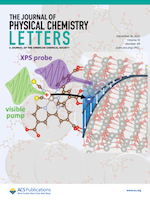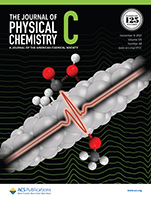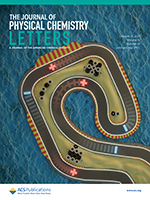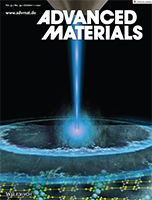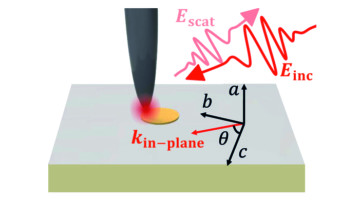Picosecond time-resolved x-ray photoemission spectroscopy provides real-time electron distributions of donors and acceptors in a prototypical bipyridyl-ZnO hybrid light harvesting system. The measurements show that photo-injected electrons remain localized within the defect-rich surface region of the nanoporous ZnO substrate, revealing a challenge for the extraction of free charge carriers. Read more »
ALS Work Using Spectroscopy
These techniques are used to study the energies of particles that are emitted or absorbed by samples that are exposed to the light-source beam and are commonly used to determine the characteristics of chemical bonding and electron motion.
Direct Observation of Surface-Bound Intermediates During Methanol Oxidation on Platinum Under Alkaline Conditions
A comprehensive mechanism for the methanol oxidation reaction (MOR) in alkaline media is presented, and it is shown that the MOR proceeds via two different pathways (via COad or H3C–Oad intermediates). The latter dominates the overall MOR current, suggesting that the H3C–Oad oxidation could be a viable pathway to accelerate the MOR in alkaline systems. Read more »
Interface Sensitivity in Electron/Ion Yield X-ray Absorption Spectroscopy: The TiO2–H2O Interface
To understand corrosion, energy storage, (electro)catalysis, etc., obtaining chemical information on the solid–liquid interface is crucial but remains extremely challenging. Here, x-ray absorption spectroscopy is used to study the solid–liquid interface between TiO2 and H2O. This result highlights the potential of electron-yield XAS to obtain chemical and structural information with a high sensitivity for the species at the electrode–electrolyte interface. Read more »
The Elusive Electronic Structure of Liquid Metals Unveiled
Over 50 years ago, renowned physicists formulated theoretical models for the electronic structure of liquid metals. Now, for the first time, researchers observed the distinct spectral features predicted by those models, at the interface of a crystalline insulator (black phosphorus) and disordered dopants (alkali metals). Read more »
Trace Key Mechanistic Features of the Arsenite Sequestration Reaction with Nanoscale Zerovalent Iron
The advancing in situ XAS technique made it possible to uncover the As-nZVI reaction pathway, especially capturing transient reaction process at subsecond scale. Combining the in situ XAS experimental data with computational chemistry enabled the reaction steps to be verified, clarifying the unambiguous identification of the transit reactive intermediates. Read more »
Cell ‘Fingerprinting’ Could Yield Long-Awaited Alzheimer’s Disease Diagnostic
A new application of infrared spectromicroscopy analyzes cells for signs of Alzheimer’s disease by measuring how the molecules in cells vibrate upon exposure to infrared light. The vibrational profile of each sample is so distinct and the difference between diseased and healthy cell samples is so visible that researchers liken the process to “cellular fingerprinting.” Read more »
Laser-Induced Cooperative Transition in Molecular Electronic Crystal
The cooperative tuning of a supramolecular electronic crystal enables access to a long-lived hidden conducting phase with a broad temperature range. Researchers demonstrate a dynamic and cooperative phase in K-TCNQ, with the control of pulsed electromagnetic excitation. A dedicated charge–spin–lattice decoupling is required to activate and subsequently stabilize the non-equilibrium phase. Read more »
A Two-Dimensional Room-Temperature Magnet
Researchers have made the world’s thinnest (one atom thick) magnet that’s chemically stable under ambient conditions. The two-dimensional material, magnetically characterized at the ALS, could enable big advances in next-generation memory devices, computing, spintronics, and quantum physics. Read more »![]()
![]()
A Powerful Infrared Technique Broadens Its Horizons
Scattering-type scanning near-field optical microscopy (s-SNOM) focuses infrared light to dimensions below the diffraction limit, measuring properties with components perpendicular to the sample surface. Researchers have now devised a way to probe components parallel to the sample, where the technique has been less sensitive. Read more »
Autonomous Data Acquisition for Scientific Discovery
Researchers at large scientific facilities such as the ALS have applied a robust machine-learning technique to automatically optimize data gathering for a variety of experimental techniques. The work promises to enable experiments with large, complex datasets to be run more quickly, efficiently, and with minimal human intervention. Read more »![]()
![]()
- « Previous Page
- 1
- …
- 9
- 10
- 11
- 12
- 13
- …
- 30
- Next Page »
